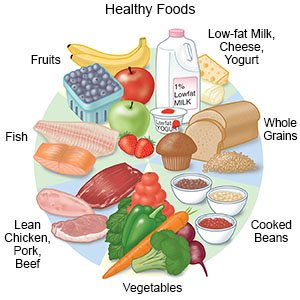Lead Poisoning in Children
Medically reviewed by Drugs.com. Last updated on Jun 5, 2024.
Lead poisoning is dangerous levels of lead in your child's blood. Poisoning usually happens when items that contain lead are accidentally inhaled or swallowed. Lead is found in paint, batteries, and gasoline fumes. Lead is easily absorbed and can cause nervous system damage. Lead also replaces calcium in bones. Children younger than 3 years are at a higher risk for lead poisoning than older children or adults. Lead gets more easily to the brain, and more lead is absorbed in young children. Young children are also more likely to put items in their mouths.
DISCHARGE INSTRUCTIONS:
Call your local emergency number (911 in the US) if:
- Your child has a seizure.
Seek care immediately if:
- Your child has been sleeping more, or has more trouble than usual waking up.
Call your child's doctor if:
- Your child has a fever.
- Your child's symptoms get worse, or do not go away.
- You have questions or concerns about your child's condition or care.
Medicines:
Your child may need any of the following:
- Iron may be given to treat anemia. Your child's healthcare provider will tell you how much you should give your child.
- Vitamins and minerals may be needed. Calcium, phosphorus, and vitamin C can help decrease blood levels of lead. Your child's healthcare provider will tell you how much you should give of each.
- Anticonvulsant medicine is given to control seizures.
- Give your child's medicine as directed. Contact your child's healthcare provider if you think the medicine is not working as expected. Tell the provider if your child is allergic to any medicine. Keep a current list of the medicines, vitamins, and herbs your child takes. Include the amounts, and when, how, and why they are taken. Bring the list or the medicines in their containers to follow-up visits. Carry your child's medicine list with you in case of an emergency.
Lower your child's risk for lead exposure:
Local health departments can help you find resources to identify and reduce lead in your home or in your community. Ask your healthcare provider for more information.
Care for your child:
- Have your child rest as needed. He or she can start to do more each day.
- Give your child more liquids to drink. This may help your child's kidneys get rid of the lead. Ask how much liquid your child should drink each day and which liquids are best for him or her.
- Offer your child healthy foods. Healthy foods include fruits, vegetables, whole-grain breads, low-fat dairy products, beans, lean meats, and fish. These may help your child feel better and have more energy. Ask if your child needs to be on a special diet.

- Work with teachers or officials at your child's school. Your child may have learning or developmental delays. This depends on how much lead he or she was exposed to and how it affected him or her. Trouble thinking, learning, or paying attention may be mistaken for attention deficit hyperactivity disorder (ADHD). Your child may be able to work with a tutor or other learning resource.
Follow up with your child's doctor as directed:
Your child may need to return for more tests. Write down your questions so you remember to ask them during your visits.
For more information:
- National Lead Information Center
422 South Clinton Avenue
Rochester , NY 14620
Phone: 1- 800 - 424
Web Address: http://www.epa.gov/opptintr/lead
© Copyright Merative 2024 Information is for End User's use only and may not be sold, redistributed or otherwise used for commercial purposes.
The above information is an educational aid only. It is not intended as medical advice for individual conditions or treatments. Talk to your doctor, nurse or pharmacist before following any medical regimen to see if it is safe and effective for you.
Learn more about Lead Poisoning
Treatment options
Symptoms and treatments
Further information
Always consult your healthcare provider to ensure the information displayed on this page applies to your personal circumstances.
